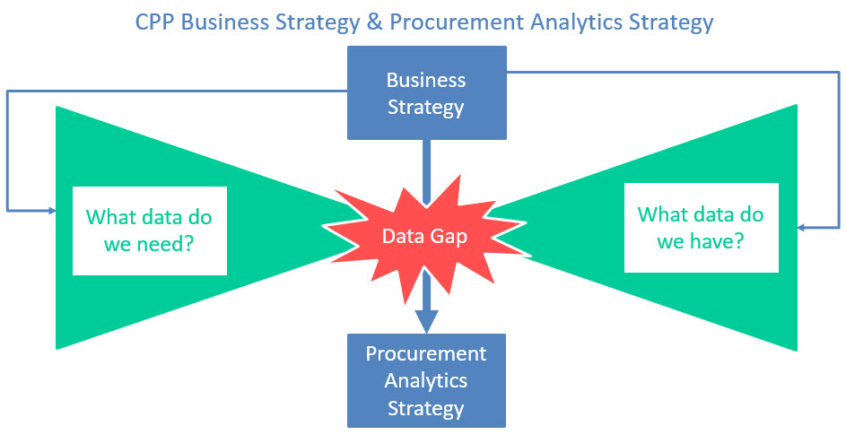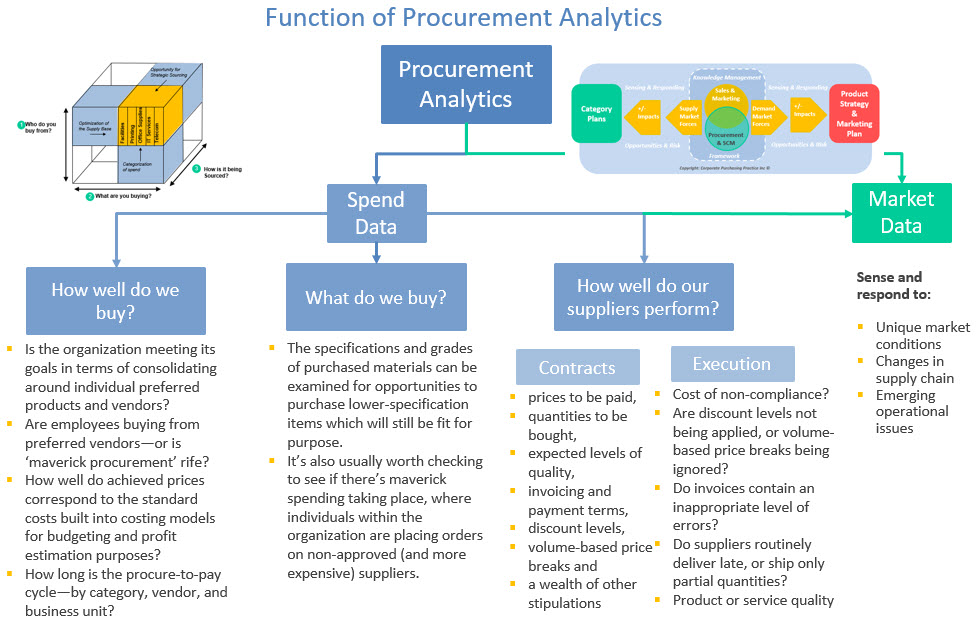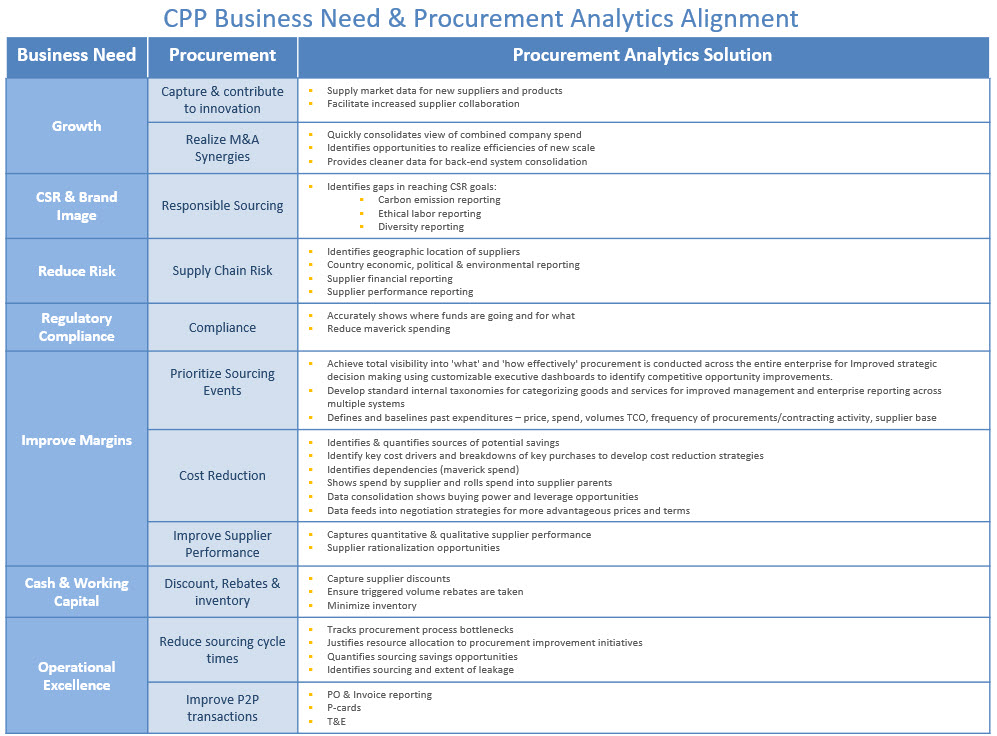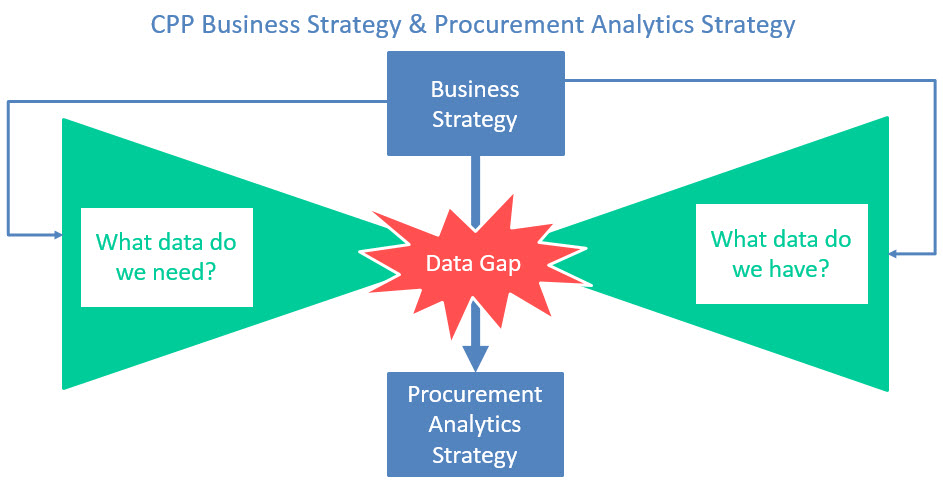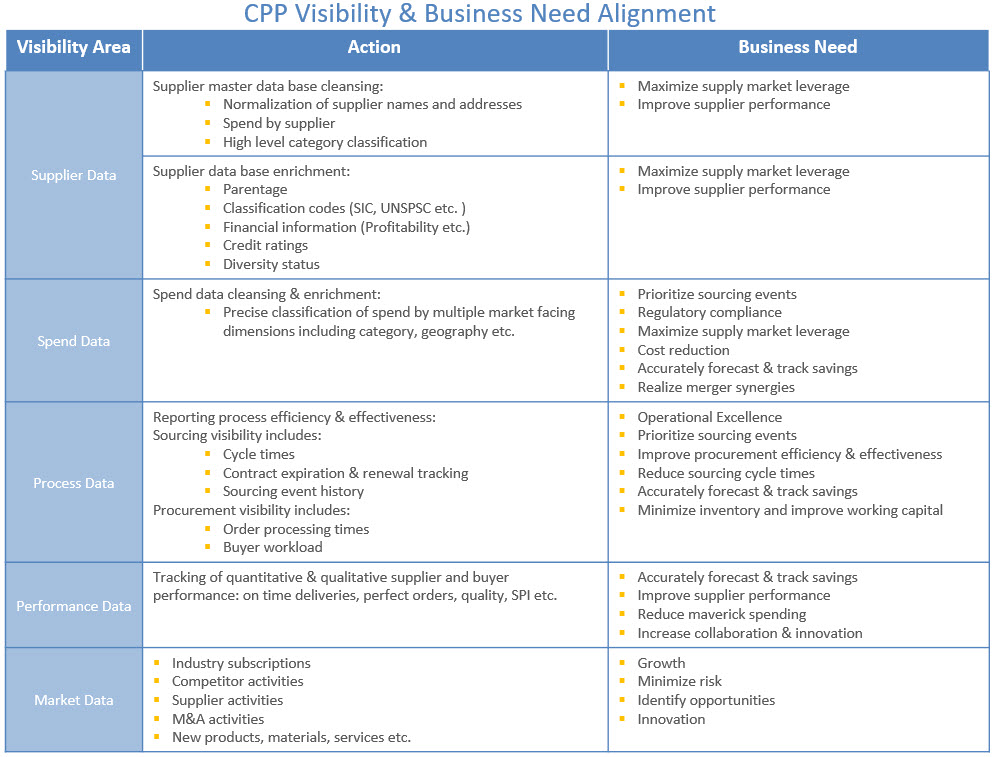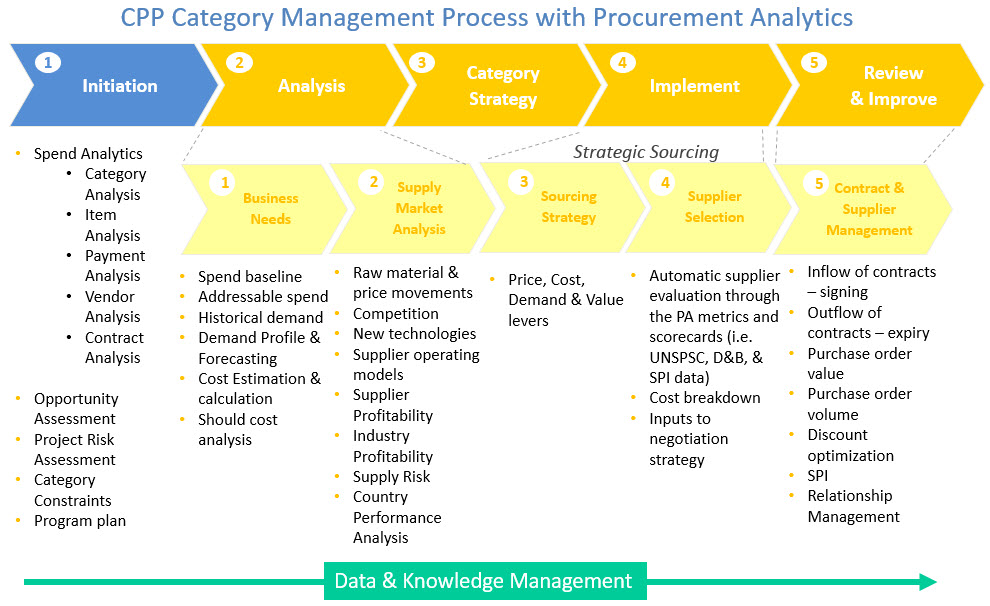Procurement Analytics Part 3:
Beyond simple spend data towards strategic decisions
Develop a Procurement Analytics Strategy: In part 2 we discussed the challenges and maturity levels in Procurement Analytics capability. Here in the final part in this series we discuss how to apply Procurement Analytics strategically.
1. Introduction
The primary function of procurement analytics tools is to support improvement strategies. By telling a company how, where and on what it is spending its money and by introducing competitive external market data that support cohesive category and sourcing strategies.
Advanced Procurement Analytics supports the transformation of procurement from a tactical to a strategic function. With that transformation, procurement is positioned as a value-creating organization with faster access to better leverage the data.
While the latest generation of ERP systems is becoming better at offering basic procurement intelligence. At some point, ERP fails to deliver the granularity required to develop advanced procurement analytics strategies and gives way to the need for a best of breed solution. One that can combine both internal spend data and external market intelligence (Fig 1.).
This need for a solution is further fuelled by the complications arising when organizations have multiple ERP systems or multiple installations of a single ERP system.
2. Identifying Business Needs and Organizational Goals:
Procurement Analytics should have a clear focus on the business goals and objectives. There are numerous pressing business needs for a CPO to address by creating spend visibility and gaining market intelligence. In Fig 2. we present a range of the most common issues, and suggest ways that creating visibility helps to address each:
Since Visibility is critical to virtually all decision-making, the list of potential business needs can be refined indefinitely. These requirements form the basis of a business plan to define the spend visibility that the organization requires and generates a solid ROI.
As we suggested in part 2, one place to start is by looking at the data needs vs. the available data to determine the data gap to be filled (Fig 3).
Once the business needs are clear and the data gap identified the next step is to align, your Procurement Analytics program to them.
3. Determining the Procurement Analytics Needs
In this step, it is important to apply a rigorous process to ensure the application of effective evaluation criteria. The following table (Fig 4.) summarizes the different data visibility needs and matches them to some common business needs.
The above tables are intended to serve as a guide, as it would be impossible to list every business need requiring Procurement Analytics. The definitions and examples should support alignment with your specific needs.
4. Procurement Analytics Applications:
Once a Procurement Analytics system is in place, it needs to link to key applications where improved visibility provides valuable inputs across the procurement value chain. These include (Fig 5):
The capability that links strategic sourcing to the business strategy is category management, and so it is in this area that the application of Procurement Analytics can have the most impact on business results.
4.1 Applying Analytics to Category Management:
Companies who have moved towards more sophisticated procurement will follow structured category management or strategic sourcing processes (Fig 6.).
Throughout this process, robust data analysis is called for raising questions such as:
- How do we extract, cleanse, and transform the data?
- What are the most effective data structures?
- What visualization outputs will most help to understand what it’s telling us?
Procurement Analytics provides the capability to extract, transform, load and analyze your organizations data to create actionable intelligence throughout the category management and sourcing process. The information from each category analysis improves category manager productivity by allowing them to focus on strategies that specifically benefit their category and in turn accomplish business specific goals.
5. Develop a Procurement Analytics Strategy
Conclusion
Data is the lifeblood of category managers. Getting your company’s spend under management and identifying new savings opportunities is critical to maximizing sourcing outcomes, and achieving your business objectives cost-effectively.
With Procurement Analytics you have a unique ability to help procurement see the available opportunities and develop an implementation roadmap to realize them in the business by leveraging previously unknown data to answer questions about:
- Your organizations buying behaviors;
- Marketplace activities impacting your organization;
- Professional expertise to improve business results.
By moving up, the CPP Procurement Analytics Maturity Matrix procurement can become an active participant in shaping broader business strategy and driving cross-functional dialogue on initiatives that manage supplier cost, quality, delivery performance and risk management. For example, procurement can develop predictive models using its knowledge of existing and emerging supplier capabilities to develop strategic options to influence go to market strategies.
With increasing global competition, complex and extended supply chains and shorter product life cycles, unforeseen supply disruptions, and marketplace fluctuations. Advanced Procurement Analytics becomes a key differentiator for competitive advantage.
By developing advanced analytic competencies, procurement can make the transformation to a strategic function. One that provides the necessary level of analytical rigor and strategic insight to drive business priorities and allocation of resources across around those priorities.
Nuff said …
If you would like to discuss how we can solve your Procurement Analytics requirements contact us.
Learn more about Procurement Analytics

